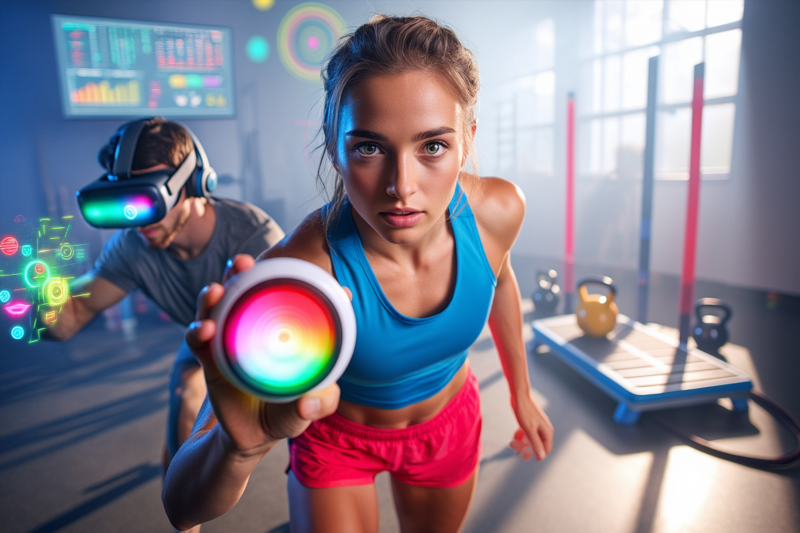
Best Training Techniques to Boost Reaction Speed
In today’s fast-paced world—whether you’re an athlete, gamer, professional, or simply eager to improve your reflexes—enhancing reaction time is crucial. Reaction speed determines how quickly you respond to sudden stimuli, impacting performance, safety, and overall agility. Developing quicker responses isn’t a matter of chance; it’s the result of targeted, scientifically-supported training methods. In this article, we will explore the best training techniques to improve reaction speed, backed by neuromarketing insights and proven psychological principles, helping you unlock your peak response potential.
Understanding Reaction Time: The Foundation of Effective Training
Before diving into training methods, it’s essential to understand what reaction time is. It refers to the interval between stimulus presentation and your response. Several factors influence reaction speed, including neural processing efficiency, sensory acuity, and decision-making skills. Improving reaction time involves training your nervous system to process stimuli faster and execute responses more efficiently.
Key Components of Reaction Speed
- Sensory Perception: How swiftly your senses detect stimuli.
- Neural Transmission: The speed at which signals travel through your nervous system.
- Decision Making: How quickly your brain interprets stimuli and chooses an action.
- Motor Response: The rapid execution of a physical or mental response.
By targeting these components, your training can achieve a comprehensive enhancement in reaction velocity.
Proven Training Methods to Accelerate Reaction Time
Effective reaction speed development combines cognitive drills, physical exercises, and innovative technology. Here are the most impactful training techniques:
1. Visual Reaction Training Exercises
Why it works: Our eyes are primary sensors for reaction stimuli. Enhancing visual processing can significantly reduce response time.
Techniques:
- Light Pattern Response Drills: Use visual cues (flashing lights, colored signals) to prompt quick button presses or movements.
- Tracking Moving Objects: Practice following and reacting to moving targets for improved eye-hand coordination.
- Video Game-based Training: Use action games designed to challenge reaction speed and decision-making under pressure.
Tools and Resources:
- Reaction training apps
- Light-based reaction gadgets
- Virtual reality (VR) systems for immersive response training
2. Reaction Time Drills with Auditory Stimuli
Why it works: Auditory responses are often faster than visual; training your auditory processing can create quicker overall reactions.
Techniques:
- Sound Cue Response: Respond immediately to specific sounds or tones.
- Musical Rhythm Exercises: Use rhythmic beats to match movements, enhancing temporal processing.
Additional Tips:
- Incorporate headphones with precise sound cues.
- Use software that combines auditory stimuli with physical responses.
3. Cognitive and Decision-Making Training
Why it works: Quick reactions depend not just on reflexes but also on fast decision-making.
Techniques:
- Reaction Speed Games: Engage in dual-task activities that require quick decisions, such as matching shapes or responding to conflicting signals.
- Memory and Pattern Recognition Drills: Improve your processing speed by recognizing patterns swiftly.
Tools:
- Brain training apps
- Pattern recognition software
4. Physical Exercise to Enhance Neural and Muscular Response
Why it works: Enhanced physical fitness correlates with faster reaction times through improved neuromuscular coordination.
Techniques:
- Plyometric Drills: Jumping, sprinting, or quick lateral movements to develop rapid muscle activation.
- Balance and Coordination Exercises: Use balance boards or agility ladders to boost motor response.
Integrate: Use high-intensity interval training (HIIT) workouts to combine cardiovascular fitness with reaction training.
5. Use of Technology and Reaction Training Equipment
Leverage innovation: Modern technology accelerates reaction speed through gamified and precise drills.
Examples include:
- Reaction Lights and Buttons: Devices that light up randomly for users to respond to quickly.
- Smart Apps: Apps that adapt difficulty based on your performance for consistent improvement.
- Virtual Reality (VR): Immersive environments that mimic real-world stimuli demanding rapid responses.
Structuring an Effective Reaction Speed Training Program
Creating a plan ensures continuous progression and motivation. Consider these guidelines:
| Frequency | Duration | Focus Areas |
| 3-5 sessions per week | 15-30 minutes per session | Visual and auditory drills, cognitive training |
| Progressive Overload | Gradually increase complexity | Use more complex stimuli and faster responses |
| Incorporate variety | Vary exercises weekly | Balance between visual, auditory, and physical drills |
Tip: Always include rest and recovery periods to prevent burnout and optimize neural gains.
Addressing Common Questions
How long does it take to improve reaction time?
Answer: Reaction times can improve significantly within 4-6 weeks of consistent training, with measurable gains often evident in just a few sessions. However, long-term improvements require ongoing practice.
Can reaction time training benefit older adults?
Answer: Absolutely. Cognitive and physical exercises tailored for seniors can preserve and boost reaction speed, reducing fall risk and enhancing overall quality of life.
Is reaction training suitable for beginners?
Answer: Yes. Exercises can be scaled according to skill level, making reaction training accessible for all ages and fitness levels.
Final Thoughts: Your Path to Faster Reactions
Improving reaction speed is a dynamic process that combines neurological training, physical exercises, and innovative technology. By systematically engaging your senses, decision-making, and motor responses, you can experience significant gains in agility, safety, and performance.
Take Action Today! Start integrating visual and auditory reaction drills into your daily routine. Explore reaction training apps and technologies that make progress engaging and measurable. Consistency is key to unlocking faster responses and superior reflexes.
Unlock your full potential—boost your reaction speed today and stay ahead in every challenge life throws your way!